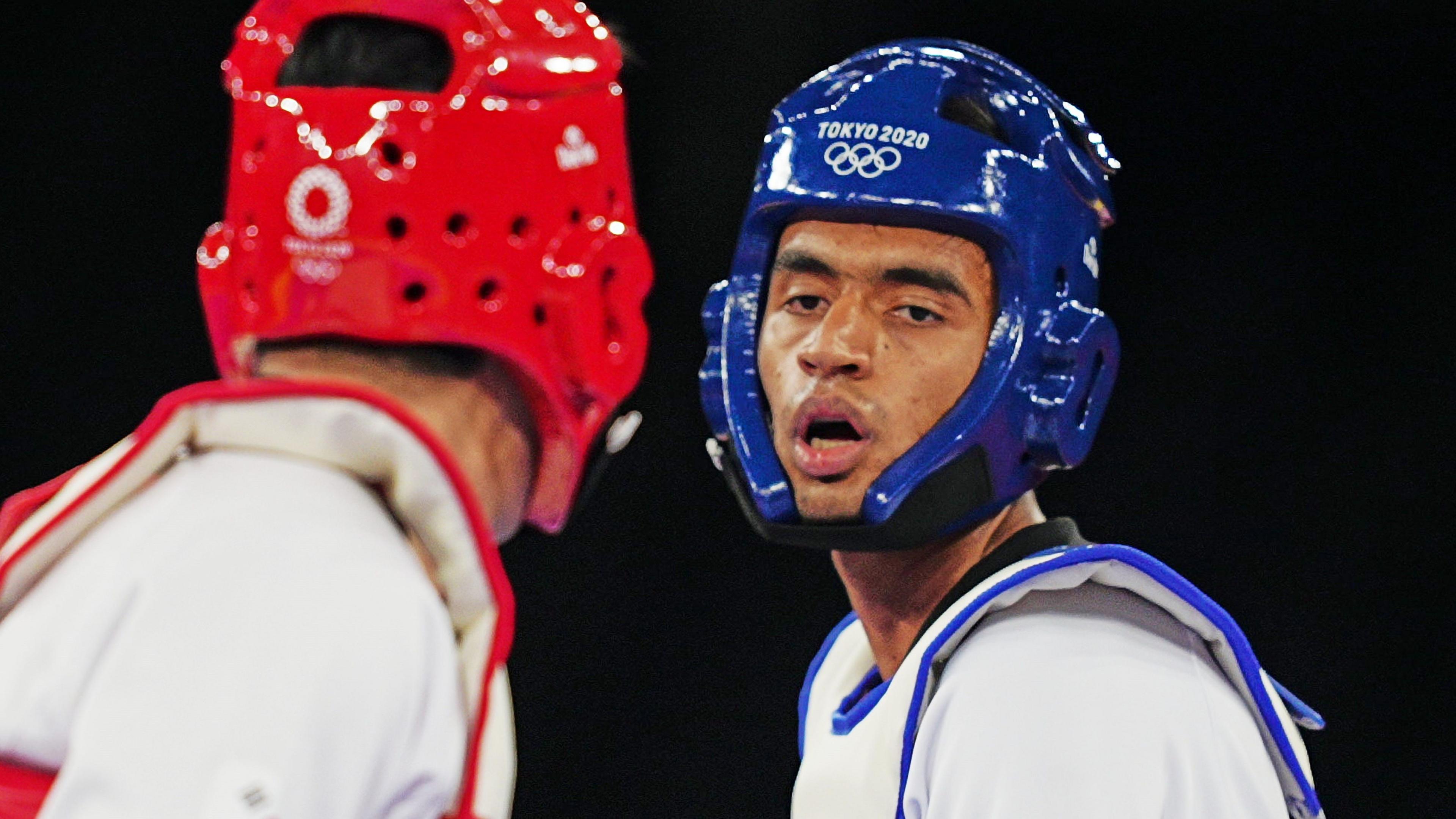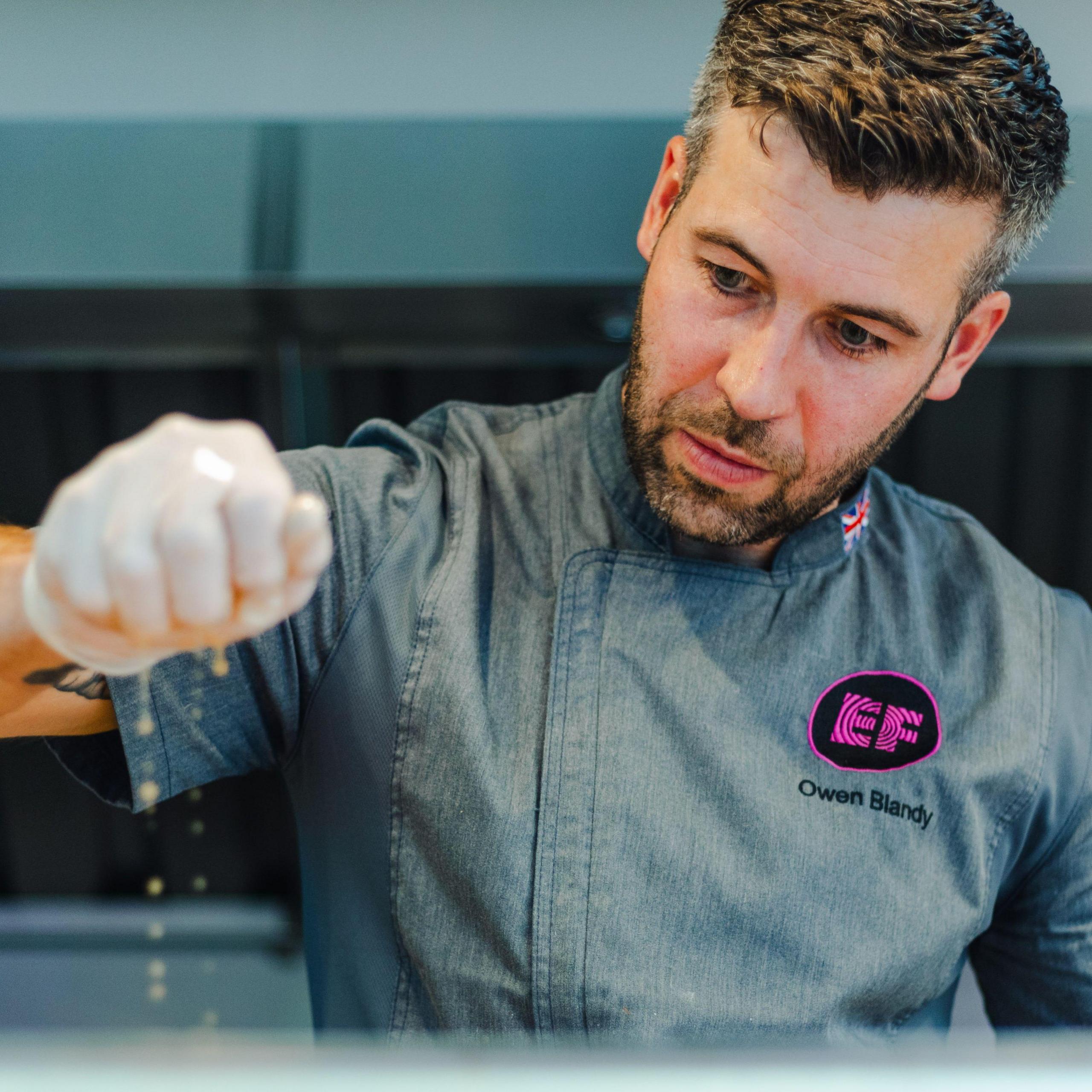
A few weeks prior to a previous Tour de France, amid the maelstrom of planning involved with eight riders and more than a dozen support vehicles navigating the country, EF Education-EasyPost head performance chef Owen Blandy received notice of an issue at one of the hotels.
For reasons unexplained, Blandy was told he would not be allowed to use the hotel kitchen, nor even cook in his own food truck on site.
If he desired, he might be able to supervise the hotel's own chef in their preparations, but would not be permitted to do so from inside the kitchen.
For a man tasked with fuelling a professional cycling team throughout the most important race on the sport's calendar, it was not ideal news. But he was entirely unflustered.
"It was fine," shrugs Blandy. "I just had a challenging few days before settling into my own kitchen."
Personal experience gleaned from a cumulative total of more than a year on the road at major races has taught Blandy to roll with the punches.
"There are never perfect working conditions in cycling so you always have to adapt and be flexible," he says.
If a hotel bans the team chef from cooking food, then so be it.
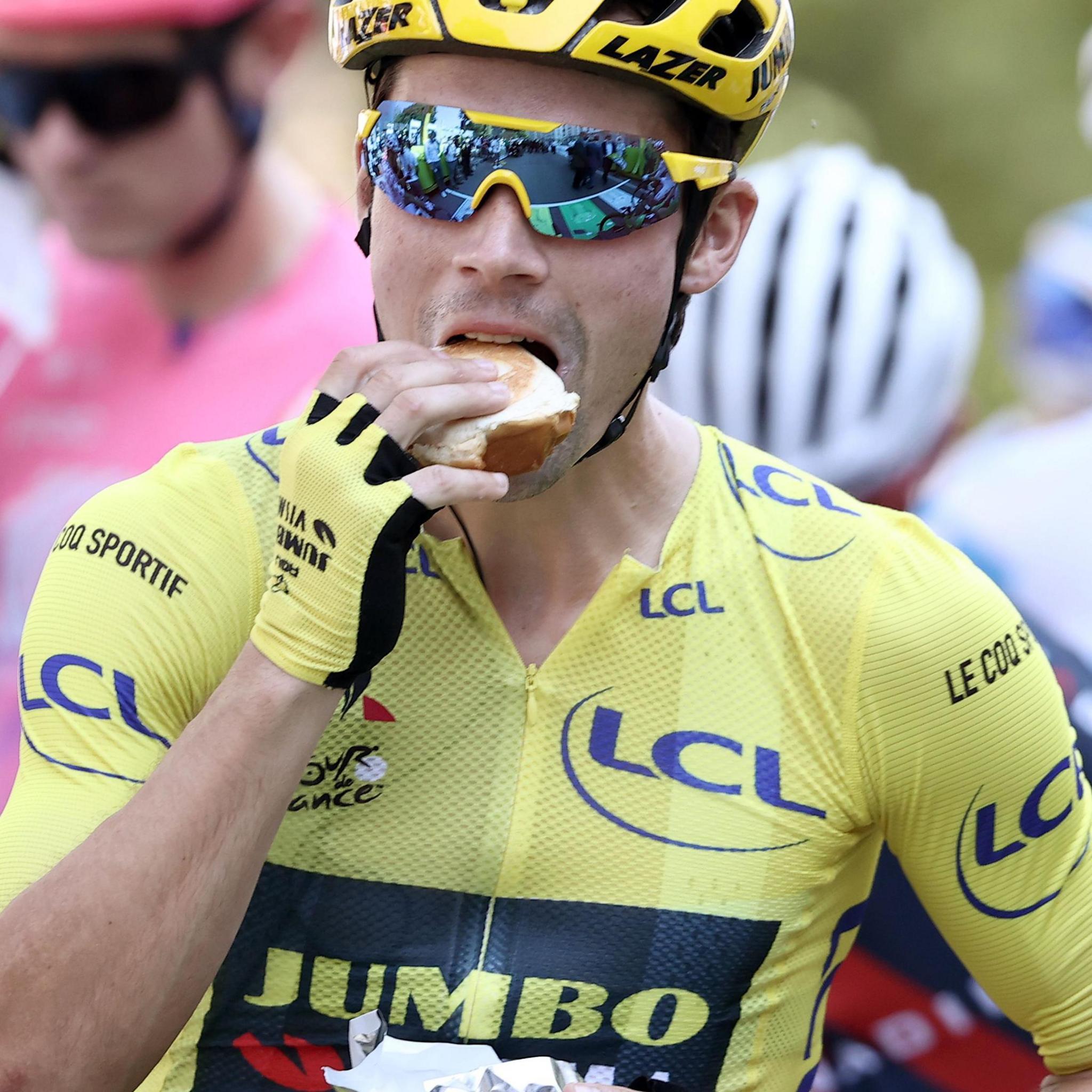
Primoz Roglic chalked up seven top-three finishes in Grand Tours for Visma-Lease a Bike before switching to Bora-Hansgrohe this year
Not so long ago, the professional cycling world's approach to fuelling was remarkably basic.
Options for riders barely extended beyond a monotonous menu of pasta, rice or whatever fare that night's hotel kitchen decided to serve up.
These days, it is an entirely different prospect, with vast sums spent on custom-built food trucks, personalised nutrition apps and meticulously planned meal regimes all in the name of performance enhancement.
For the nutritionists and chefs tasked with providing sustenance to power their team's riders over 2,170 miles in the coming weeks there are principally two dilemmas: what food to prepare and how to do so in an ever-changing environment.
The answers are gleaned from a year-round process that begins in December during pre-season training.
While the riders are honing their bodies, ready for the multitude of races ahead, the number-crunchers eagerly gather data to better understand their nutritional needs.
"We know their individual bodies, their metabolism, how many calories they burn when resting and exactly what they will do in training, the intensity, how long and how many calories they will burn," says Visma-Lease a Bike head of nutrition Martijn Redegeld.
"Heart rate plays a role. We have that after each training ride. And at certain points in the season we test lactate measurements and breathing measurements in the lab to develop a good profile of each rider."
As one of three teams - alongside UAE Team Emirates and Ineos Grenadiers - whose budget tends to dwarf all others, Visma-Lease a Bike has strived to place itself at the forefront of nutritional advancement.
Partnerships with universities aim to ensure they are firmly aware of developments within the field "to keep that competitive edge over other teams", says Redegeld.
With riders burning an average of 6,000 calories per day during the Tour (around three times more than a resting adult), Visma-Lease a Bike have even begun using artificial intelligence to help determine precisely how much - and what type of - food each individual cyclist should consume.
Personalisation has become increasingly paramount, with the team developing its own app,, external where various algorithms are used to generate individualised nutrition plans.
When a rider comes back from a day on the bike, they simply open the app and are told exactly how many grams of each nutritional component (carbohydrates, proteins, fats etc) to put on their plate. No brain power is wasted beyond using the ubiquitous buffet table weighing scales.
While the methods used to generate precise nutritional needs vary between teams, all of them work to a broad five-meal daily plan of breakfast, pre-race snack, on-bike fuelling, recovery meal and dinner.
The core feeding principles remain the same across the peloton, although they are tweaked depending on the upcoming day's requirements and whether the rider in question is a climber or a sprinter, a domestique or a general classification contender.
Carbohydrates - usually in the form of rice or pasta - serve as the petrol, necessitating painfully high consumption levels.
Proteins - predominantly fish or chicken - are always unprocessed and fibre is kept low to minimise gut irritation and aid digestion, with fruit and vegetables often consumed in juice form.
Vegetarians tend to supplement themselves with protein shakes, in addition to plant-based proteins like tofu and seitan.
Riders might be allowed more vegetables and fibrous foods before flatter race days, when the body will be better equipped to break them down, while red meats are saved as a treat the evening before rest days.
On-bike fuelling comes courtesy of roadside soigneurs who load up musette bags with a variety of high-carbohydrate forms that can be selected or discarded based on personal preference.
Energy bars, gels, drinks and gummies provide quick hits on tough days, while more traditional food sources include wet rice cakes, brioches, jam sandwiches, flapjacks, sweet breads and cakes for easier days.
The required quantities are unenviably vast. Each rider consumes close to 1.5kg of rice or pasta every day and in the region of 120g of carbohydrates per hour when on the bike - the equivalent carbohydrate content of five hourly bananas.
One EF rider once went through four tubs of maple syrup during the three-week race.

Team backroom staff hand out grab bags of high-energy foods to their riders to enable them to fuel mid-stage
Blandy's laptop contains a treasure trove of nutritional information to enable his menu design.
One spreadsheet allows him to compare every food item's nutrient values to decide whether to cook with aubergines or parsnips, quinoa or couscous, chicken breast or chicken thigh.
Another document comprises the EF Education-EasyPost recipe bible, listing a myriad of soups, salads, carbohydrates, proteins, sides, desserts, post-race snacks and drinks. In a bid to combat flavour fatigue, repetition is kept to an absolute minimum across a three-week race.
"The food I make is all transparent," says Blandy. "There are no rich sauces, it's all plain, simple cooking with a light amount of seasoning, light amount of oil, fresh herbs and citrus.
"Instead of putting flavour in with cream, salt and butter we're adding it with herbs and citrus because they are low calorie and contain antioxidants."
It does not lend itself to the type of innovative kitchen artistry you might see on television shows or in fancy restaurants.
"When I'm teaching new chefs, I always say the only way they will mess it up is by being too 'cheffy,'" says Blandy.
"You need to swallow your chef ego and put it into a dessert or play around at the end of a race. Go wild then but don't mess with the simple stuff: the carbohydrates and proteins. Give the guys what they want and they will be happy.
"I've cooked risottos before and they've just asked for plain basmati rice. They aren't there on a holiday. They don't care about fancy food. They are literally there to fuel."
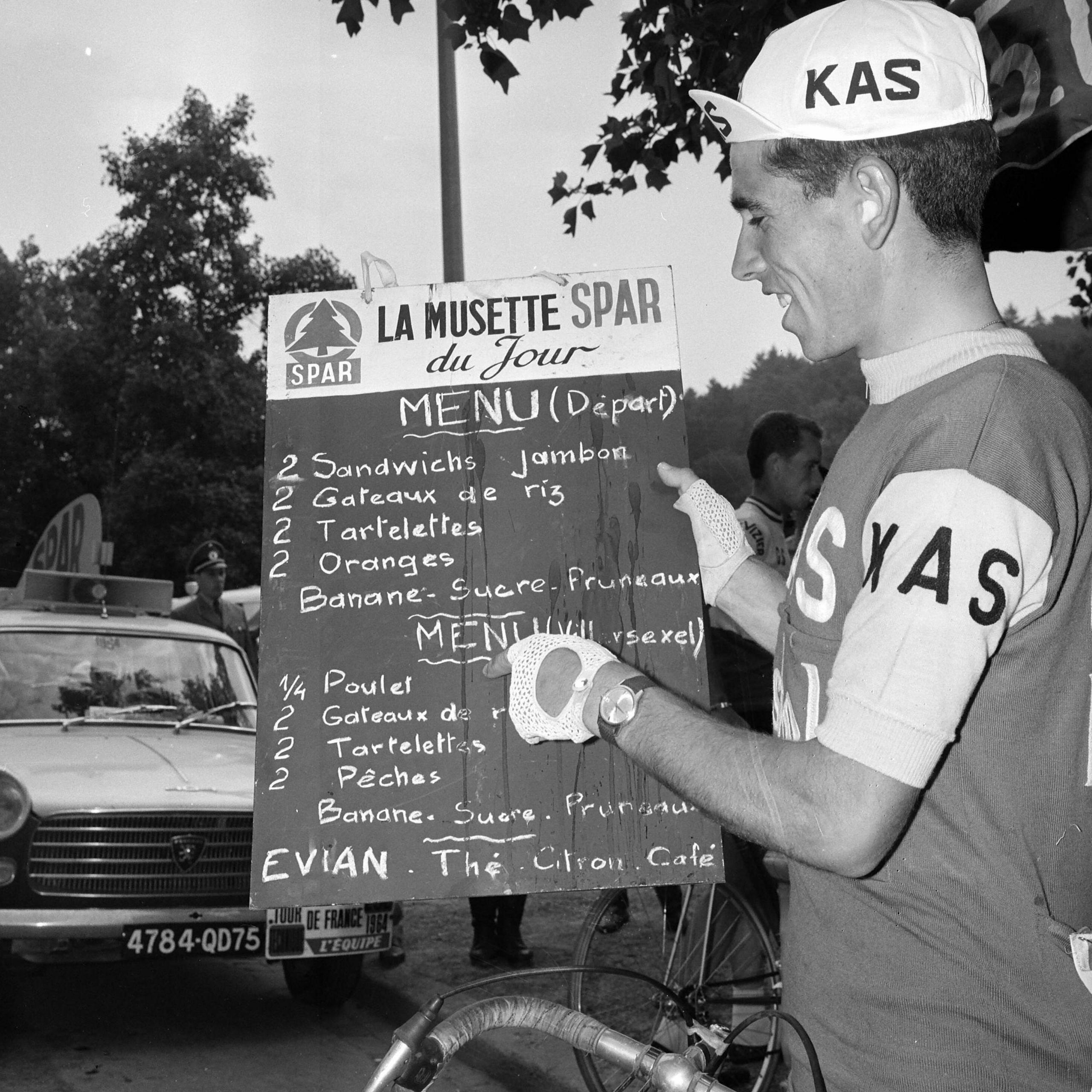
Rider nutrition has evolved since Joaquim Galera was considering the day's menu at the 1964 Tour de France
Blandy estimates he has stayed - and therefore been tasked with cooking - at more than 300 hotels during his time working for EF Education-EasyPost. The transient nature of the job presents numerous logistical headaches.
A chef's day at the Tour de France begins around 06:00. They must prepare fresh breakfast items (all packaged food has already been set up the night before) for 08:00 before packing up and driving to the next hotel while the race is ongoing.
As well as cooking the food, they are also responsible for procuring it - a task that varies depending on team and, crucially, sponsor.
Blandy's experience of European supermarkets means he knows where to find the highest-quality food and shops personally for most of it, in addition to emailing hotels in advance to order some perishable items.
Conversely, Visma-Lease a Bike have been sponsored since 2014 by Dutch supermarket Jumbo, who provide all their food at every race, including the Tour de France.
"During a Grand Tour there are three times that a new delivery comes from the Netherlands to stock up on fresh produce," says Redegeld. "It's always the same Dutch food and the guys like that because they know what to expect and we know what products they like, so we can always have that available.
"It makes things a lot easier for the chefs who don't have to search in local supermarkets for things. For me as a nutritionist, we know the nutritional values of all the products so it makes the calculations a lot easier."
Upon arriving at a hotel, chefs will begin preparations for dinner and the following day's breakfast and snacks.
Professional cycling teams tend to adhere to one of two dining styles.
Most travel with customised kitchen trucks - a similar size to supermarket delivery vans - where food is stored and meals cooked. Food is then served up for the riders and wider team members in a private room inside the hotel.
A select few teams - including Ineos Grenadiers - instead choose to travel with a far bigger lorry, which contains a kitchen and dining room.
Camaraderie between chefs on rival teams is high. "Sometimes you're in a hotel with six teams, so the car parks are rammed," says Blandy.
"It's manic. Everyone is sharing water and electricity. So you have to scratch each other's backs. Chefs come to me and ask for an ingredient and I go to them. We help each other out."
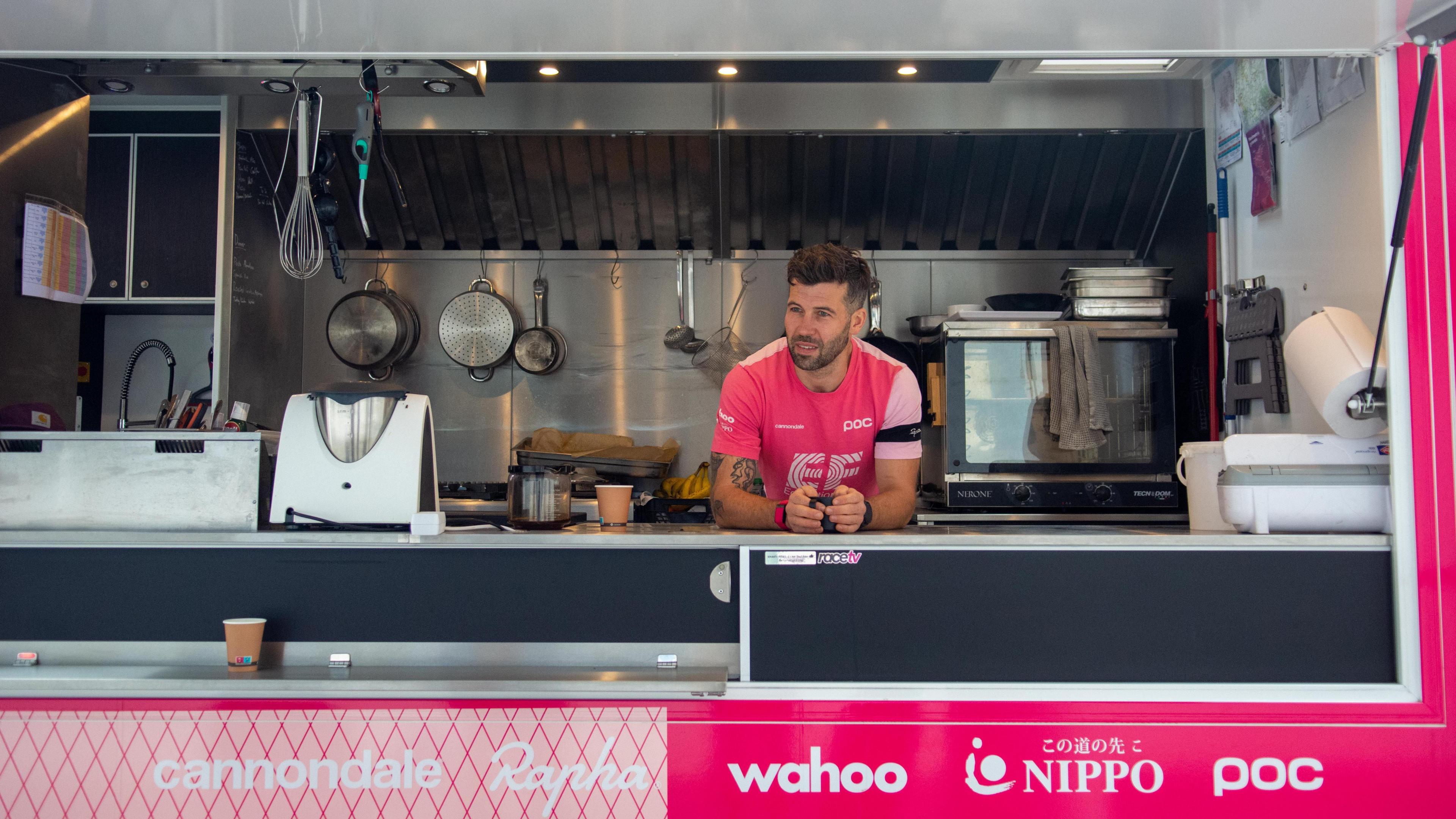
Blandy cooks in the car park, before serving up in a dining room in the team hotel
It is a world away from the three successive weeks of pasta with tomato sauce that riders just a generation ago were accustomed to stomaching throughout their Tour de France endeavours.
Redegeld predicts the nutrition evolution will continue, suggesting that within a decade or so teams will employ DNA analysis to take rider fuelling personalisation to the next level.
But all the analytics are worthless without someone to prepare the food.
Earlier this year, Blandy was all set for a quiet week at home when he received an SOS from the team.
He was given half an hour to pack his bags and jump in a taxi to the airport because a fellow EF Education-EasyPost chef had fallen ill before the Paris-Roubaix race.
"I rolled my knives up and threw them in a suitcase," he says. "I felt like chef special forces."
Cooking is serious business in the elite cycling world.
Related topics
Previously on Insight
- Published28 June 2024
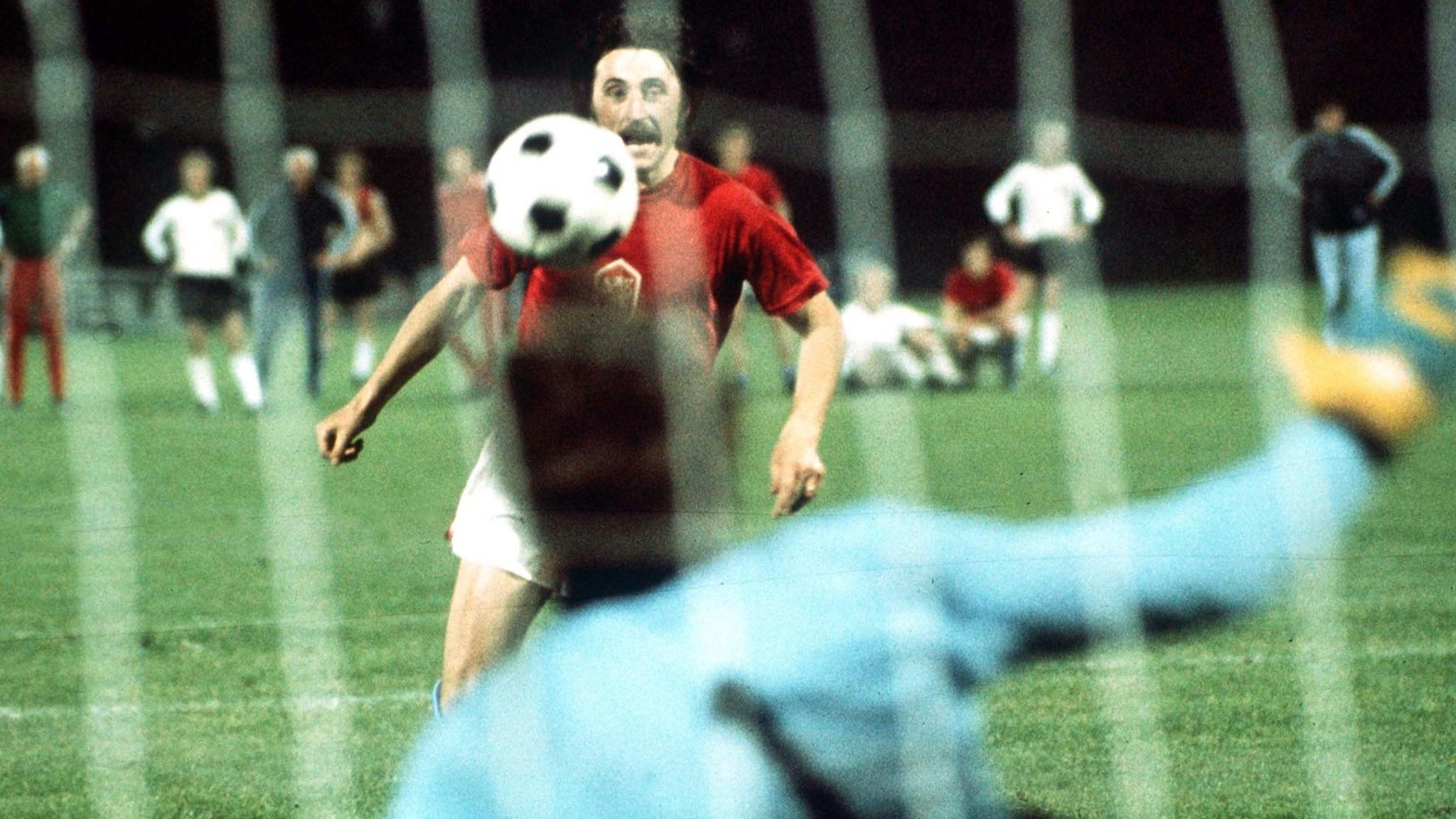
- Published1 August 2024
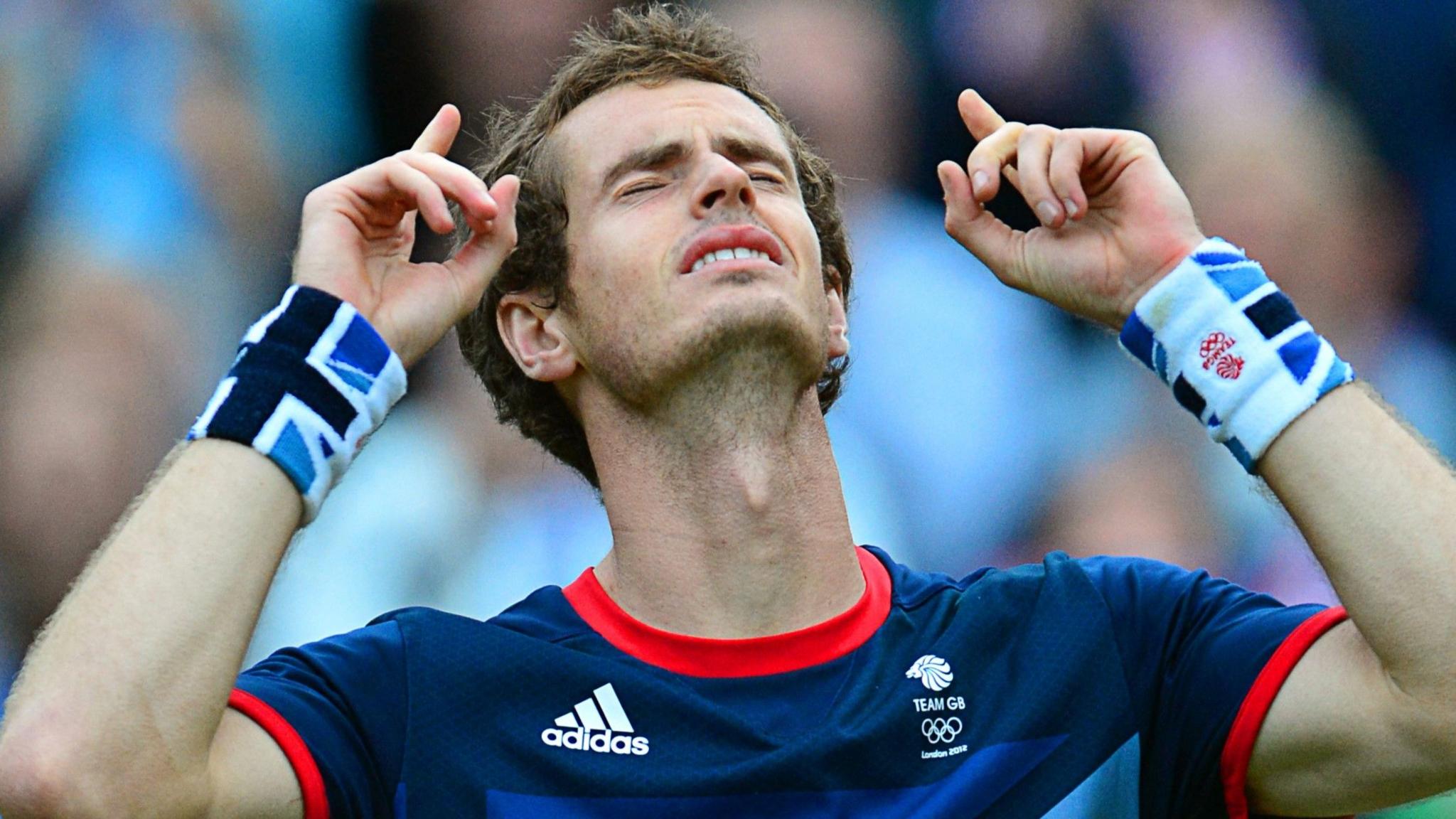
- Published26 June 2024
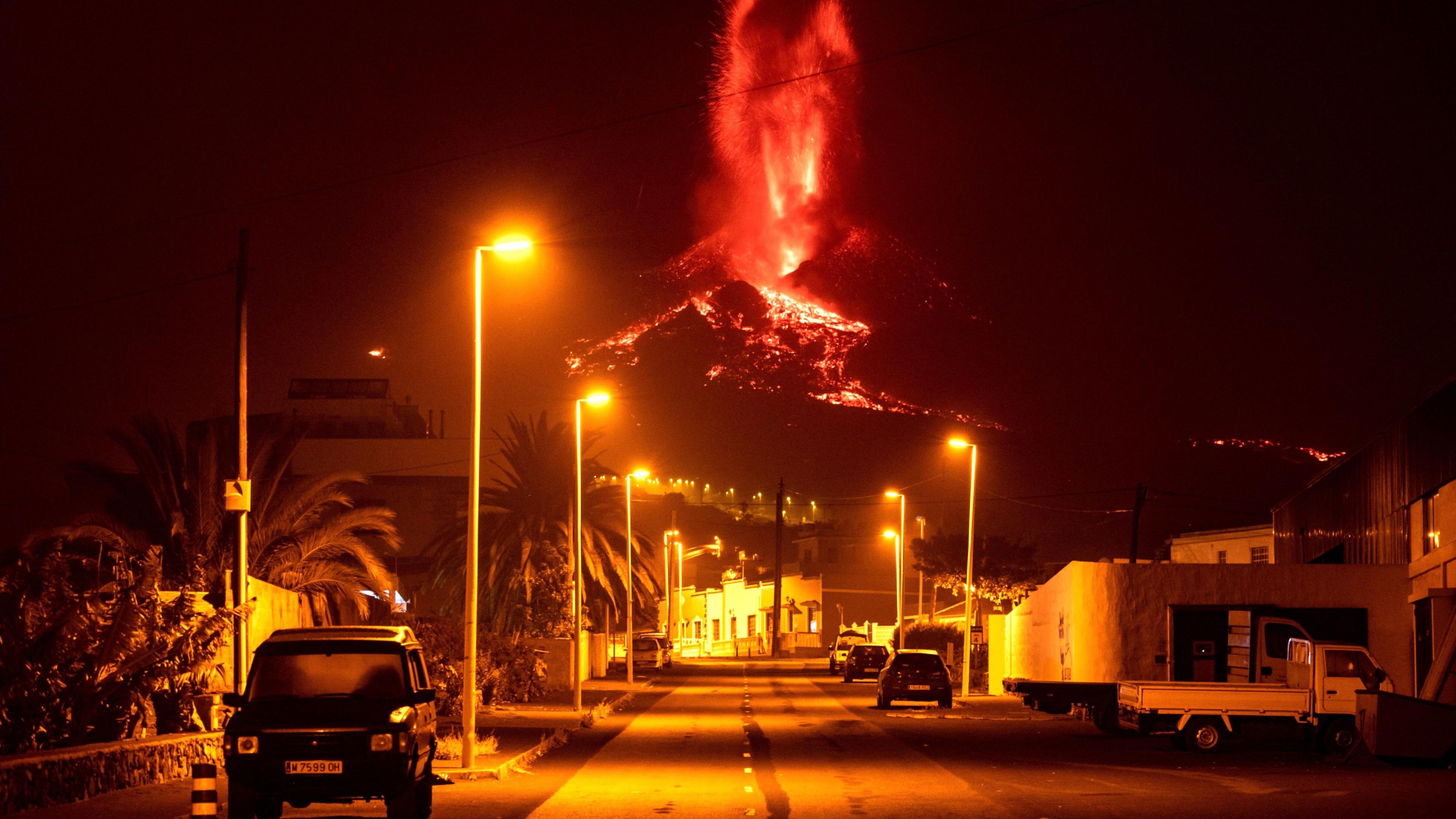
- Published20 June 2024
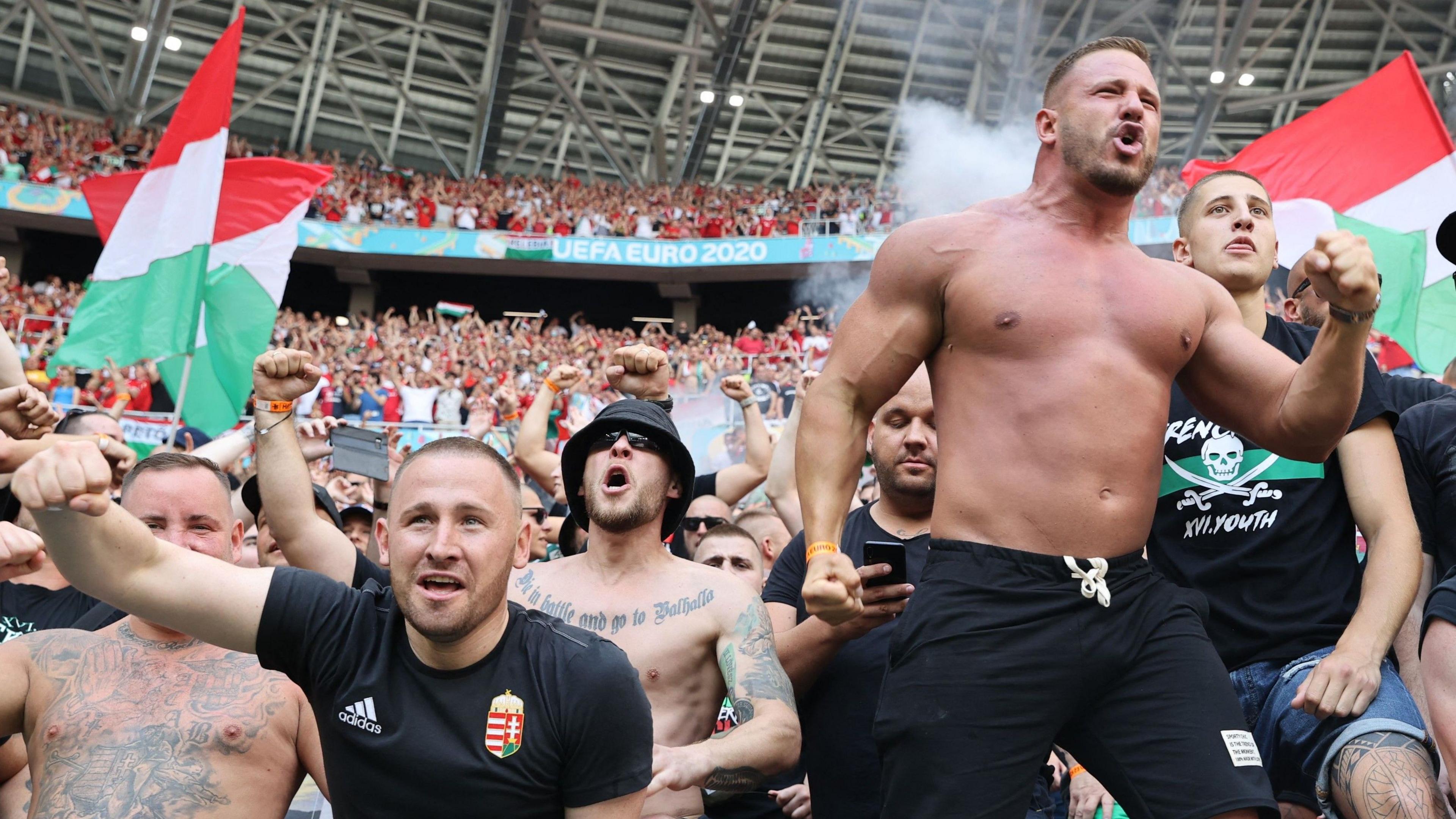
- Published20 June 2024
